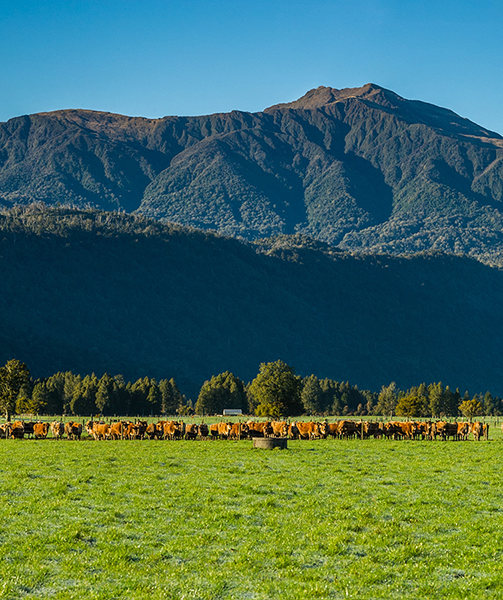Fertiliser & Sowing
Navigating pasture revitalisation through undersowing and fertilisation is crucial for farmers facing depleted landscapes. This guide provides strategies for sustained pasture health and resilience.
Undersowing drought-affected or damaged pastures
If your pastures are looking tired and run out, then undersowing could be the answer for you. It’s fast, relatively cheap and you can cover a big area of ground without losing much feed in the process. In an undersowing situation, shorter term cultivars such as annuals, Italians and hybrids are ideal due to their ability to rocket out of the ground, produce bulk high-quality feed and be ready for grazing before winter. Autumn is often a busy season for undersowing, and this year is no exception due to the significant pasture damage incurred last winter, and the dry summer we are currently experiencing.
Key considerations when undersowing
- Condition score pastures: assess how much rye/ clover is in the paddock. If something needs to be done, decide what species is the best fit for the situation. Will the paddock be cropped the following spring, or are you looking at 18 to 24 months or something even longer term?
- Timing: don’t delay, as weeds will take hold faster than you realise and fill the gaps in paddocks that need to be undersown. This also gives the cultivar you’ve drilled more time to establish before winter as well. Undersow after hard grazing and sow at 50-75 percent of the normal rate (using more seed in thinner pastures). Graze normally, to prevent seedlings from being shaded.
- Slugbait: slugbait is a key insurance policy and putting a sack out overnight to detect slugs will help you make this decision.
- Treated seed: for the first six weeks until the endophyte starts functioning, seed treatments will protect new seedlings from insects such as Argentine stem weevil and any diseases that may be present. Withholding for undersown pastures is three weeks compared to six weeks for new pastures.
- Fertiliser: sowing with a starter fertiliser such as DAP will help in establishing the ryegrass seedlings as the phosphate promotes root development and the nitrogen helps speed things up.
Fertiliser
A sound fertiliser programme should be implemented based on soil and herbage test data and take into account land and farm type, production data, environmental issues and legislation – at both a local and national level.
In a tough economic environment, with income down and expenditure up, it’s important to prioritise where your money is spent. Fertiliser is often the first area to be reduced. If cuts are to be made, make sure you look after newer pastures, high-performance production areas and crops. Maximising your investment is key to maintaining productivity.
Key things to keep in mind with your fertiliser programme
- Soil and herbage test data will show which nutrients are limiting pasture production and animal performance. These tests should be done at the same time at least every two years following the same transect lines to graph a trend over time.
- The nitrogen cap of 190 units, alongside compliance and feed budgeting, will help predict a feed shortage and assist with strategic nitrogen application.
- In a high-rainfall area during autumn and winter, avoid easily leached products e.g. sulphate sulphur vs elemental sulphur.
- Apply trace elements at the right time e.g. cooler autumn and winter temperatures will have reduced clover activity, potassium will be better applied and utilised with a spring application.
- Increased productivity comes at a price; fertiliser inputs need to be increased to sustain this.
- If fertiliser nutrient levels have been mined or are going to be mined, this will need to be addressed in future fertiliser applications.
- Your farm type will dictate fertiliser application timing e.g. winter lamb contracts = autumn application, breeding and early revenue stock = spring application. Pasture and crops need to be excellent quality at the right time for best utilisation.
- Maintenance fertiliser and split applications in spring and autumn are an option to get trace elements on at the right time and help with cash flow.
- Don’t forget about soil pH. If it is too low, vital nutrients are locked up in the soil and weeds will also become an issue.
There are various fertiliser products that can be used, or blends that can be put together to correct the nutrient or mineral deficiency in your soil. To improve soil health status, talk to your local Farmlands Technical Field Officer and Ballance representative to help prioritise your fertiliser application.



